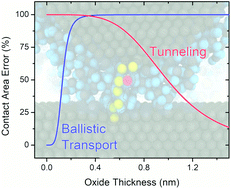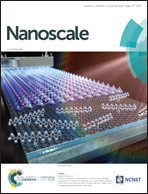Simulations of the effect of an oxide on contact area measurements from conductive atomic force microscopy
Abstract
Nanoscale contact area in conductive atomic force microscopy can be determined by analyzing current flow using electron transport theories. However, it is recognized that native oxides on the conductive tip will reduce current flow, thus degrading the accuracy of the measured contact area. To quantify the adverse effect of an oxide on contact area measurements, we use molecular dynamics simulations of an oxide-coated platinum tip and a crystalline platinum substrate, where both the contact size and conductance can be inferred from the positions of atoms in the interface. We develop a method to approximate conductance based on the distance between atoms in platinum channels across the contact. Then, the contact area calculated from conductance using ballistic transport and tunneling theories is compared to that obtained using the known positions of atoms in the contact. The difference is small for very thin (<0.1 nm) or very thick (>1.0 nm) oxides, where ballistic transport and tunneling theories work well; however, the difference is significant for oxides between these limits, which is expected to be the case for platinum in many practical applications.



 Please wait while we load your content...
Please wait while we load your content...
